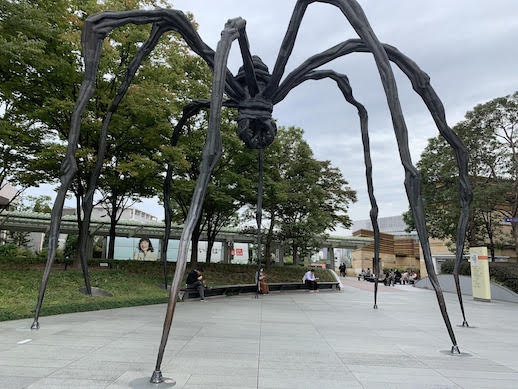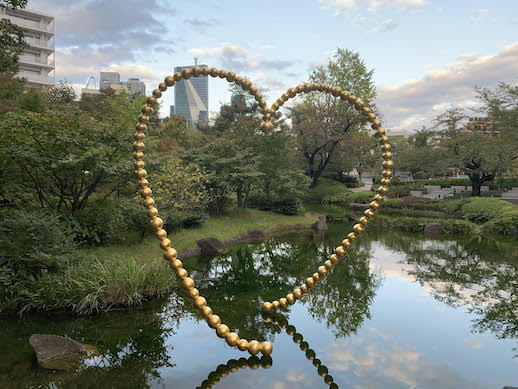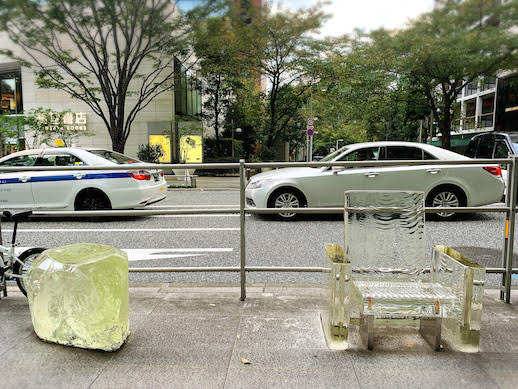What Kind of Art is Close to You?
“What kind of art is close to you?” I want to ask.
‘Public art’ is art that exists in the public spaces where we live. Notions regarding public art have undergone various changes according to the times. In recent years, public art is thought to play many roles in urban development, such as enhancing creation of local communities and relationships in local life.
In urban areas, many people pass in front of public art. People busy walking through the concrete-covered skyscrapers of the big city are often unaware of the art in the space. When I stop in front of an art piece or point my camera at it to appreciate the art I see, people passing by stare at me with puzzled looks. A lot of art is scattered around the Roppongi Hills area of Tokyo. How does the art that exists in the big city look to my eyes? In this text, I would like to introduce three artworks in Roppongi that were particularly impressive to me, as well as what I experienced and felt.

Maman
A huge spider statue by French artist Louise Bourgeois installed at the main entrance of Roppongi Hills stands out to visitors. The work’s title is “Maman”. Inside the body of the bronze spider, 20 shining marble eggs are held. It represents longing for a mother. It seems to show how people from all over the world gather in this place, meet, and create new values and wisdom that carefully hatches and spreads like the eggs held by Maman.
I was wondering about the title “Maman” attached to this work. At first, I felt the thin legs that seemed about to collapse and the heavy eggs held in the center looked strange. However, when I saw people passing under this work, people eating rice on the bench next to me, and when I myself went underneath this work, I felt a little reassured and warm. Louise Bourgeois said she saw spiders as strong creatures. I felt that this work represented Louise’s own mother. The slender and long legs of the spider express the mother’s slender feminine arms and firmly grasp the foundation of the ground. I felt that the appearance was expressing strength as a symbol of Roppongi. I felt an overwhelming presence and kindness, and I thought it was a strong and gentle work that envelops the people who come to this place.

Kin no Kokoro
This is the work of Jean-Michel Othoniel, a contemporary French artist, set in a pond in Mohri Garden in commemoration of the 10th anniversary of Roppongi Hills and Mori Art Museum. The title of the work is “Kin no Kokoro” (Gold Heart). When walking around the pond, the work appears to transform from an iconic Mobius ring shape to a large heart. When the sculpture is reflected on the surface of the water, it has a golden glow and an aura encouraging the viewer to engage with the work. I remember feeling calm standing near this heart statue that blends in with the green scenery of the garden surrounded by buildings in the big city. On the day I visited, there were autumn leaves. The statue matched the autumn scenery, and its reflection in the pond made me forget the city. One of the ways to enjoy this work is by walking around the pond.
The scenery of the greenery around the pond changes with the seasons. At first glance, the bronze statue is covered in gold, which seems cold, but I was overwhelmed by how well it fits into the historical landscape of Japan’s nature and Mohri Garden, which has been there since the Edo period. This space made me forget the big city in an instant.

Chair that disappears in the rain
This artwork is located on the sidewalks of Keyakizaka-dori and Sakurazaka-dori, which are the main streets of Roppongi Hills. Here you can see the realization of a ‘Streetscape’ project created by the collaboration of 13 designers. “Chair that disappears in the rain” by Japanese artist Tokujin Yoshioka is one of the works on the street. When you put a piece of glass in water, the outline of the glass gradually disappears, and it appears as if this chair disappears on a rainy day. The chair is made from a raw material for making lenses for large astronomical telescopes and was processed with special techniques.
The first time I saw this work was as a photograph. I wanted to actually see this creation, which has a title of great impact. It wasn’t a rainy day when I saw it this time, but I couldn’t hide my surprise at how it blended into the city. It is impressive that the surface looks like ripples of raindrops. I was also struck by how the transparent glass melted into the landscape. I felt that it was a work that could be enjoyed in various ways, despite being intended for sitting. There may be a view that you can see by sitting down after looking at a lot of art. Rainy days are when many people feel depressed, however, this is a work that I want to see on such a rainy day. When I first encountered it I was able to think about the wide range of expressions in art. By all means, I would like to visit again on a rainy day.
What I noticed this time when I visited the art spots in Roppongi, is that how in the past I hadn’t looked at the art around me. The three works I introduced this time were pieces that I had seen several times and had passed before. However, looking back, I didn’t remember seeing the works. When I was pointing my camera to shoot the work, many people turned to me with the expression, “What are you shooting?” This is evidence that Roppongi’s public art blends into the city. On the other hand, it is proof that no one pays attention to the art around them. I wanted to know more about the city filled with the expressions of various artists. I also realized that I needed to let people know that there is art around us that we don’t notice. I will make an effort to look around me more.
Finally, I would like to ask you again. “What kind of art is close to you?”
Text and photos by Aya Haraikawa
Joshibi University Art Writers
Joshibi University Art Writers



